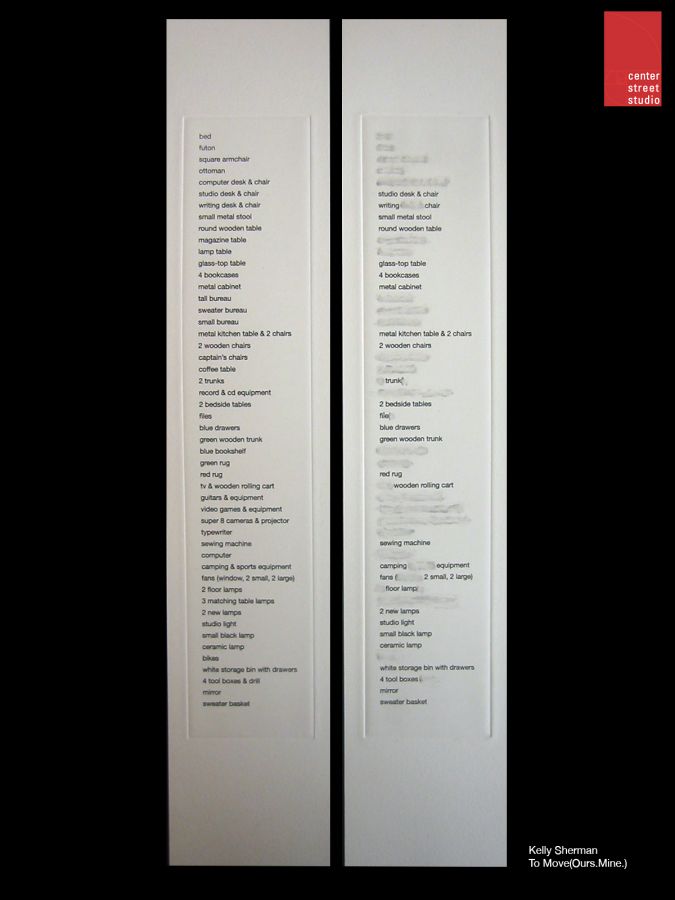Kelly Sherman is a conceptual artist working in the Boston area. This print is a diptych with each panel measuring 20.25 x 4 inches.
"As the title suggests, To Move (Ours. Mine.) is comprised of two lists of household items to move. Printed using a photoetching process, both were made from the same narrow copper plate. One print details the belongings of a couple: bed, files, sewing machine, camping & sports equipment, etc. The other evidences many erasures. Describing the belongings of only one: file, sewing machine, camping equipment, etc., it reveals an alteration of the original list. Gray smudges are the meager remnants of the many missing items, lone evidence of where the copper printing plate was ground down for removal.
Ultimately, To Move (Ours. Mine.) presents a narrative of a union disintegrated. The lists together address the topics of unity, loss, heartbreak, memory, and even consumerism. This story of moving—moving in and moving out—is told only through the material items the characters own, through which objects they share, which they keep, and which they lose. This simple approach to depicting such complex topics is what interests me most: that two stark lists might possibly relate the strain and emotion of love lost." Kelly Sherman, Cambridge 2007
"As the title suggests, To Move (Ours. Mine.) is comprised of two lists of household items to move. Printed using a photoetching process, both were made from the same narrow copper plate. One print details the belongings of a couple: bed, files, sewing machine, camping & sports equipment, etc. The other evidences many erasures. Describing the belongings of only one: file, sewing machine, camping equipment, etc., it reveals an alteration of the original list. Gray smudges are the meager remnants of the many missing items, lone evidence of where the copper printing plate was ground down for removal.
Ultimately, To Move (Ours. Mine.) presents a narrative of a union disintegrated. The lists together address the topics of unity, loss, heartbreak, memory, and even consumerism. This story of moving—moving in and moving out—is told only through the material items the characters own, through which objects they share, which they keep, and which they lose. This simple approach to depicting such complex topics is what interests me most: that two stark lists might possibly relate the strain and emotion of love lost." Kelly Sherman, Cambridge 2007



